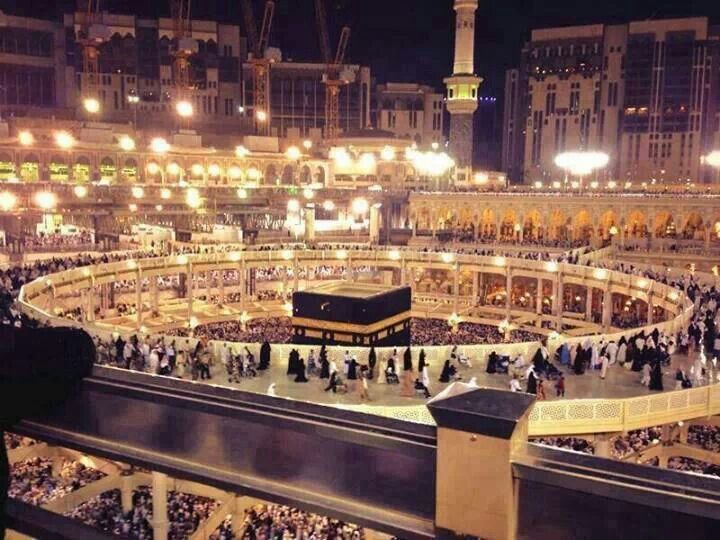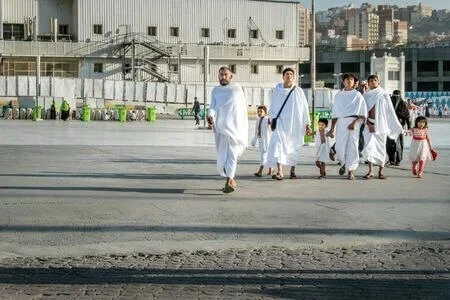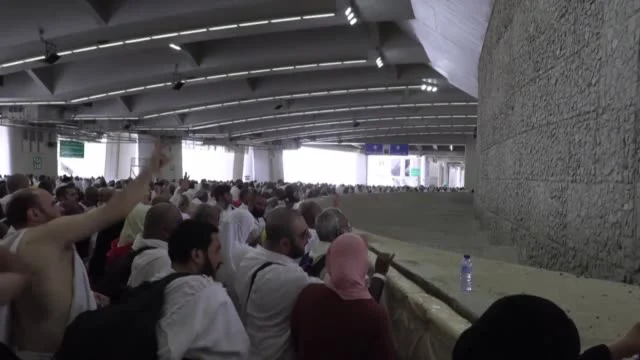7 Hajj Steps – Pilgrims’ Complete Hajj Guide

7 Hajj Steps: Hajj, one of Islam’s core pillars, is an annual spiritual pilgrimage that Muslims
must undergo at least once to declare their service and faith to Allah (SWT).
Every year in the Islamic month of Dhul-Hijjah, millions of Muslims visit the
Holy Kaaba to perform Hajj, following Prophet Muhammad’s (PBUH) 1,377-year-old
Sunnah. However, a Muslim must be physically, emotionally, and financially stable to
perform Hajj. The condition of being financially and physically capable of conducting
The Muslim who successfully completes the Hajj is regarded as an “intifadah.”
“Hajji” means “must” in Arabic.“We have completed the shrine (Holy Kaaba), a focal point
for the people and a protected sanctum,” Allah (SWT) says in the Holy Quran about the
significance of Hajj. We provide Abraham and Ismail strength, so you can use Abraham’s
shrine as a prayer home. You are to clean my house for those who come to see me,
for those who reside here, and for those who nod and prostrate.” (2:125)
“And to people the Hajj,” Allah (SWT) says elsewhere in the Quran.
They’ll ride every sinewy camel to you, and they’ll arrive from every deep and far place.” (22:27)
The Hajj rites last five or six days, officially commencing on the 8th of Dhul-Hijjah
and finishing on the 13th of the same month; Hajj is Islam’s major yearly religious festival.
It means “to join the voyage.” The following are the seven steps of Hajj:
1 – Ihram and Intentions
2 – Mina aka “City of tents”
3 – Mina to Arafat, 9th day of Dhul-Hijjah
4 – Muzdalifah
5 – Rami – Stoning the devil
6 – Nahr 7 – Farewell Tawaf
Step 1 – Ihram and Intentions

7 Hajj Steps: When traveling to Hajj, the first two stages are to make a sincere intention and to
wear the Ihram. Muslim pilgrims are advised to don the Ihram after performing the
niyat, which consists of two pieces of unstitched white sheets for men and a loose-fitting
Abaya for women covers the entire body. Before crossing Miqat — Makkah’s outer
bounds – the pilgrim is advised to wear the Ihram on Dhul-Hijjah. The following are the
five entry sites or significant Miqats for pilgrims: Abby Ali (Dhu’l Hulaifah) – For pilgrims
passing via Madina or coming from Saudi Arabia, this is the Miqat point. It is recommended
that they perform Hajj al-Tamatt’u. As-Sail Al-Kabeer (As-Sail Al-Kabeer) Qarn-al Manzil —
For pilgrims passing through or leaving Taif or Najd, this is the Miqat point. Al- Juhfah –
A Miqat point for pilgrims passing through or coming from Egypt, Syria, or Morocco,
it is located near Rabigh.Dhat’Irq – This is the Miqat point for pilgrims arriving from
or passing through Iraq. Sa’adiyah (Yalamlam) – For pilgrims passing through or coming
from Yemen, India, or Pakistan, this is the point of Miqat. Pilgrims are also advised to recite
Talbiyah while abstaining from any sinful activities once in Ihram. It is recommended that
the Talibyah be repeated aloud:
لَبَّيْكَ اللَّهُمَّ لَبَّيْكَ، لَبَّيْكَ لَا شَرِيكَ لَكَ لَبَّيْكَ، انَّالْحَمْدَ، وَالنِّعْمَةَ، لَكَ وَالْمُلْكَ، لا شَرِيكَ لَكَ
Labbayk Allaahumma labbayk, labbayk laa shareeka laka labbayk, ‘innal-hamda, wanni’mata, laka walmulk, laa shareeka laka.
I am always at Your service, O Allah, I am always at Your service. You have no partner,
and they are always at your service. All honor, blessings, and dominions are, without
a doubt, Yours. You don’t have a partner.” (2:841) (Muslim) (Muslim) (Muslim) (Muslim
Muslims planning to conduct Hajj al-Tamatt’u should combine the Umrah and Hajj
procedures once they arrive in Makkah. Muslims do Tawaf by walking around the
Holy Kaaba seven times in an anti-clockwise fashion. They next conduct the Hajr-e-Aswad
(Black Stone) rite and proceed to the second leg of Umrah, which runs between the
Safa and Marwa mountains. Pilgrims begin their journey to Mina once the Umrah is completed.
Step 2 – Mina, often known as the “City of Tents”

7 Hajj Steps: Mina is a tiny village located 5–6 kilometers from Makkah. Pilgrims are advised to
relax till the next day after arriving in Mina’s tent city. While at Mina, pilgrims say all
five Salahs, beginning with Zuhr at noon and finishing with Fajr at dawn. Mina now
has contemporary tents with all of the necessities. While in Mina, Muslims are
required to pray both obligatory and non-obligatory prayers.
Step 3 – 9th Day of Dhul-Hijjah, Mina to Arafat

The pilgrims begin heading towards Arafat on the morning of the second day
of Hajj, the 9th Dhul-Hijjah while reciting Talbiyah at the top of their voices. When
Muslim pilgrims approach Mount Arafat, they do Zuhrain, which combines the
Zuhr and Asr prayers with the Qasar prayer. This is known as Waquf – the act of
standing before Allah (SWT) – and is observed from midday until sunset near the Jabal al-
Rahmah. Mount Mercy, also known as Jabal al Rahmah of the Arafat, is located at 14.4
kilometers from Mina and is where the beloved Prophet Muhammad (SAW)
delivered his farewell sermon.
Step 4 – Muzdalifah
Muzdalifah, a small village halfway between Mina and Mount Arafat, is the
pilgrims’ second stop on their Hajj journey. The pilgrims offer Maghribaen
— a combined Maghrib and Isha prayer – as they arrive on the grounds of
Muzdalifah at nightfall. For the Rami ceremony, Muslims spend an entire night
outside under the stars collecting 49 pebbles of comparable sizes (stoning of the Devil).
On the morning of the 10th of Dhul-Hijjah, they leave Muzdalifah.
Sa’i and Tawaf al-Ifadah
The pilgrims will now return to Makkah to perform Tawaf al-ibadah andSa’I
(running between the Safa and Marwa hills). After that, Muslims return to Mina
to execute the Rami, Nahr, and Halq deeds.
Step 5 – Rami (Stoning the Devil)

7 Hajj Steps: Pilgrims arrive in Mina and execute the Rami act by stoning the Jamaat al-Aqabah.
Seven stones are thrown at the structure of the column The stoning of Jamrat
commemorates Prophet Ibrahim’s (AS) defiance of the devil’s attempt to persuade
him not to fulfill Allah’s (SWT) instruction. To drive the devil away, Prophet Ibrahim (AS)
flung tiny pebbles. Rami should be done every day around noon On the 11th and 12th of Dhul-
Hajjah, Rami is performed.
Step 6 – Nahr
7 Hajj Steps: Muslim pilgrims are urged to sacrifice an animal, such as a camel or lamb, after
completing Rami on the 12th of Dhul-Hijjah. Pilgrims can do this by purchasing
sacrifice tickets or vouchers that state that the sacrifice was made in their name.
The sacrificial animal’s meat should be handed to the poor.
Taqsir and Halq
7 Hajj Steps: Shaving the head is known as Halq, whereas shortening or trimming the hair is known
as Taqsir. Men pilgrims are advised to get their heads fully shaved or cropped after
performing the sacred rite. While it is banned for women to shave their heads, it is
recommended that they have a strand or lock of their hair clipped. Halq and Taqsir
represent a Muslim’s total dedication to Allah (SWT) and separation from worldly appearances.
Step 7 – Farewell Tawaf
7 Hajj Steps: Pilgrims return to the Holy Kaaba in Makkah after completing the
ritual to perform the “Tawaf al-Ifadah,” also known as the “Farewell Tawaf,”
followed by Sa’I. Though the Hajj is officially over, many pilgrims continue to Madinah before
returning home.
Why Do Muslims Circumambulate the Kaaba Seven Times?
7 Hajj Steps: There is no precise reason why Muslims go seven times around the
Kaaba. Muslims are required to make seven circumambulations
around the Holy Kaaba. completing Umrah or Hajj, as they are
required to do five times a day in devotion. Tawaf, on the other
hand, reflects the belief that a Muslim’s life should focus solely
on obeying Allah’s(SWT) directives and following Prophet Muhammad’s Sunnah (PBUH).
Summary – 7 Steps of Hajj
Hajj is one of Islam’s five basic pillars.
Because Hajj is obligatory for all Muslims,
it is recommended that financially and physically
capable Muslims perform it at least once.
You May Also Like: How Do You Pray Eid Prayer? – A Step-by-Step Guide, Sunnahs
